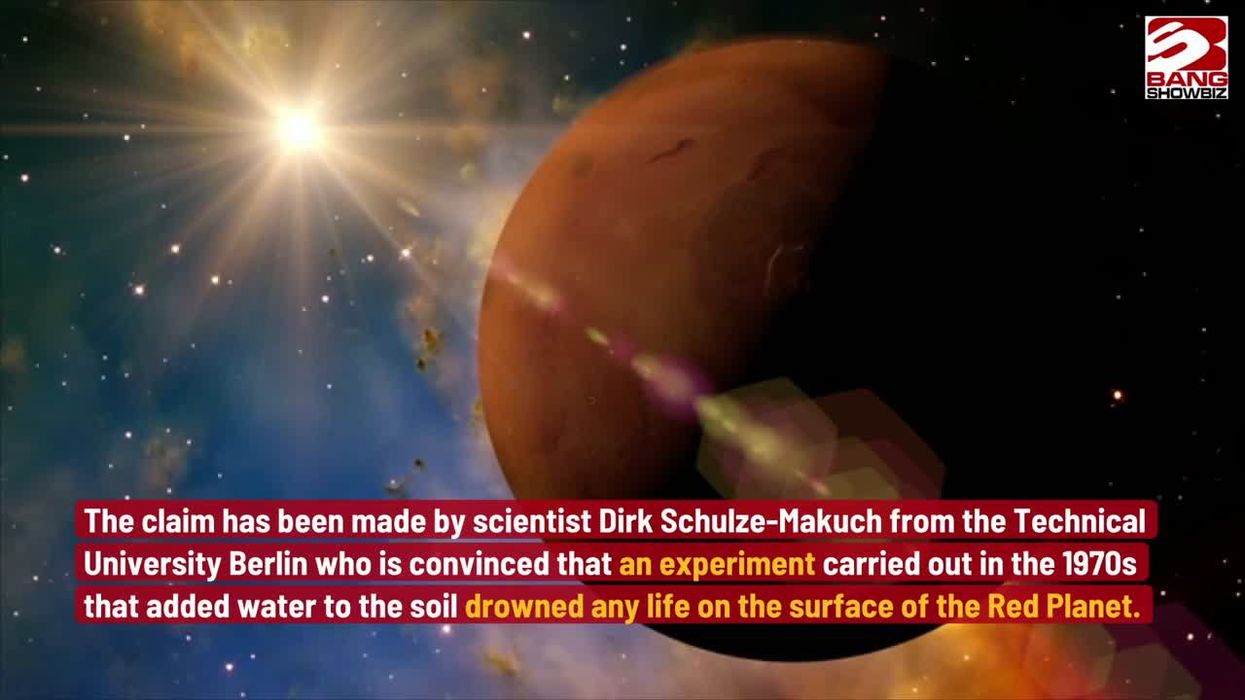Science & Tech
Liam O'Dell
Sep 02, 2023
NASA mistakenly killed life on Mars half a decade ago
Bang Showbiz - Bang Bizarre / VideoElephant
When he’s not making radical, controversial changes to Twitter/X, Elon Musk is eyeing up plans to colonise Mars in the coming years with his company SpaceX – and now a team of researchers at the Virginia-based George Mason University claims it has found out the minimum number of people needed to successfully takeover the red planet.
In the study – the results of which were published to the research platform Arxiv in August - the academics established a model to find out the ‘initial population size’ required on Mars to produce a “stable colony size”.
They ran the model five times for 28 Earth years, and increased the population by 10 people each time - from 10 to 170 individuals.
“Given that there are four critical tasks that are needed continuously (air, water, food production and waste removal) in addition to handling disasters, and two skills needed for each task, we chose a population size of 10 as the minimum needed for a ‘stable’ colony size.
“The population is allowed to dip below 10 as long as it bounces back within 1.5 years, or the amount of time between Earth resupply shuttles.”
The test found all initial population sizes over 50 were able to sustain a population of at least 10 people across the time period, and that the bare minimum number to meet that criteria is at least 22 people.
There you go, Elon. You’re welcome.
It’s certainly a decrease in the minimum number previously suspected by French researcher Jean-Marc Salotti in June 2020 – that was the rather astronomical figure (sorry) of at least 110 people.
And the Virginia researchers didn’t stop there, either, as they also took a look at the personality types best placed to handle the highly stressful environment that is living on a completely different planet.
There’s four:
- “agreeables”: low competitiveness and aggressiveness, and not fixated on “stringent routine
- “socials”: medium competitiveness, extroverted, require social interaction but not fixated on stringent routines
- “reactives”: medium competitiveness and fixed on stringent routines
- “neurotics”: high competitiveness, highly aggressive and a “challenged ability to adapt to boredom or a change in routine”
Perhaps unsurprisingly, the “agreeables” came out on top.
The researchers added: “In all runs, the Agreeable personality type was the only one to survive the full duration of model runs. This is likely because it has the highest coping capability.”
Their results found that while the “neurotic” was “most likely to fail”, and both “reactives” and “socials” fluctuated, the “agreeables” was the “most resilient”.
“While this model assigns equal numbers of each personality type, future work could try adjusting the proportion of each to possibly lead to a lower required minimum initial population. For example, a crew of all Agreeable personalities may be more successful,” they suggest.
Musk, meanwhile, said earlier this year that he was optimistic humans landing on Mars was "possible" in the next five years, and "highly likely" in a decade.
Sign up to our free Indy100 weekly newsletter
Have your say in our news democracy. Click the upvote icon at the top of the page to help raise this article through the indy100 rankings.
Top 100
The Conversation (0)














